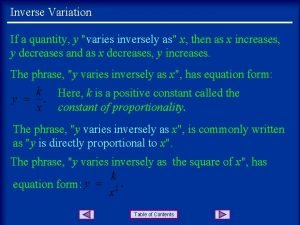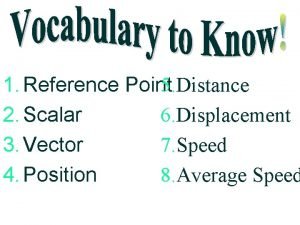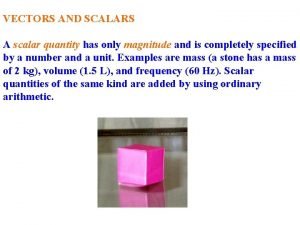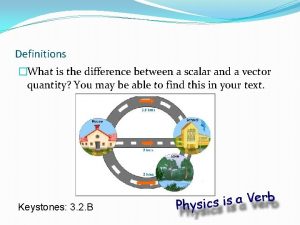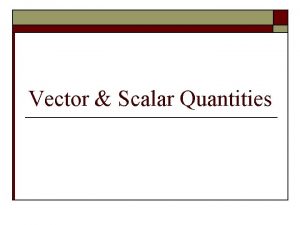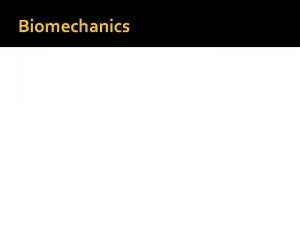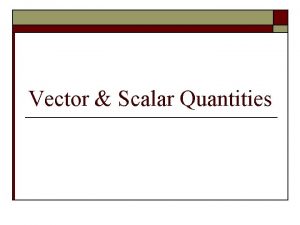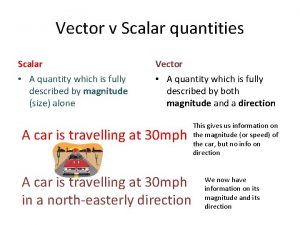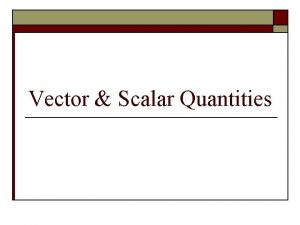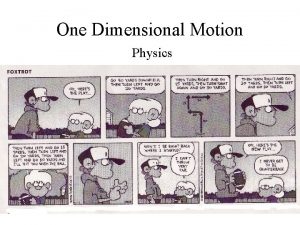Motion Terminology Scalar A scalar quantity is a











- Slides: 11

Motion - Terminology

Scalar • A scalar quantity is a quantity that requires only a magnitude (size) and appropriate units for its full description. • Examples – distance, speed, time

Vector Quantity • A quantity that requires a magnitude (size), appropriate units, and a direction for its complete description. • Examples – Displacement, velocity, acceleration, force

Position • The separation between an object and a reference point in a particular direction.

Position-Time Graph • Graph of an object’s motion that shows how its position depends on clock reading, or time.

Distance • The separation between two points. This is a scalar quantity.

Displacement • A change in position in a particular direction. Because direction matters, displacement is a vector quantity.

Speed • Rate of distance traveled to time interval. Because speed is distance over time, speed is a scalar quantity and direction is not important.

Velocity • The ratio of the change in position to time interval over which the change takes place. Velocity is a measure of displacement over time and since displacement is a vector quantity, velocity is also a vector quantity.

Velocity-time graph • A plot of velocity of an object as a function of time.

Acceleration • Change in velocity divided by time interval over which it occurred. • Or…rate of change in velocity. In IB Physics, a “rate of change” refers to a time rate of change unless otherwise indicated. • Since change in velocity is a vector quantity, acceleration is also a vector quantity.
 Polar and axial vector pdf
Polar and axial vector pdf All examples of vector quantity
All examples of vector quantity Difference between scalar and vector
Difference between scalar and vector Navigator method physics
Navigator method physics Quantity y varies inversely as quantity x
Quantity y varies inversely as quantity x Derived quantity
Derived quantity Centripetal acceleration scalar or vector
Centripetal acceleration scalar or vector Is distance a scalar quantity
Is distance a scalar quantity Scalar quantity has
Scalar quantity has Scalar and vector quantity difference
Scalar and vector quantity difference Scalar quantity characteristics
Scalar quantity characteristics Angular motion biomechanics
Angular motion biomechanics




